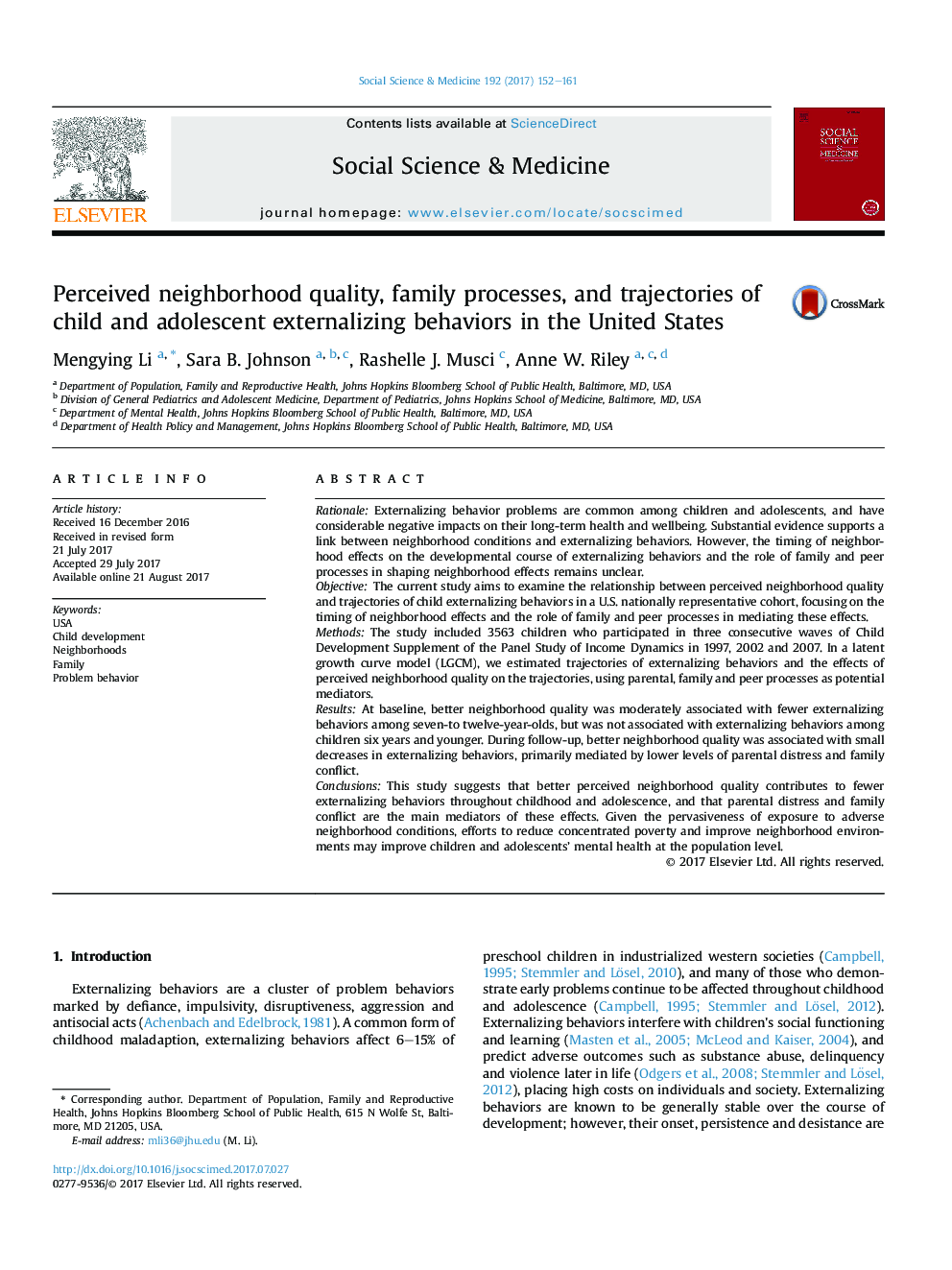| کد مقاله | کد نشریه | سال انتشار | مقاله انگلیسی | نسخه تمام متن |
|---|---|---|---|---|
| 5046373 | 1475977 | 2017 | 10 صفحه PDF | دانلود رایگان |
- Association of externalizing behaviors and neighborhood quality starts in childhood.
- Neighborhood quality predicts changes in externalizing behaviors.
- Parental stress and family conflict mediate neighborhood effects.
RationaleExternalizing behavior problems are common among children and adolescents, and have considerable negative impacts on their long-term health and wellbeing. Substantial evidence supports a link between neighborhood conditions and externalizing behaviors. However, the timing of neighborhood effects on the developmental course of externalizing behaviors and the role of family and peer processes in shaping neighborhood effects remains unclear.ObjectiveThe current study aims to examine the relationship between perceived neighborhood quality and trajectories of child externalizing behaviors in a U.S. nationally representative cohort, focusing on the timing of neighborhood effects and the role of family and peer processes in mediating these effects.MethodsThe study included 3563 children who participated in three consecutive waves of Child Development Supplement of the Panel Study of Income Dynamics in 1997, 2002 and 2007. In a latent growth curve model (LGCM), we estimated trajectories of externalizing behaviors and the effects of perceived neighborhood quality on the trajectories, using parental, family and peer processes as potential mediators.ResultsAt baseline, better neighborhood quality was moderately associated with fewer externalizing behaviors among seven-to twelve-year-olds, but was not associated with externalizing behaviors among children six years and younger. During follow-up, better neighborhood quality was associated with small decreases in externalizing behaviors, primarily mediated by lower levels of parental distress and family conflict.ConclusionsThis study suggests that better perceived neighborhood quality contributes to fewer externalizing behaviors throughout childhood and adolescence, and that parental distress and family conflict are the main mediators of these effects. Given the pervasiveness of exposure to adverse neighborhood conditions, efforts to reduce concentrated poverty and improve neighborhood environments may improve children and adolescents' mental health at the population level.
Journal: Social Science & Medicine - Volume 192, November 2017, Pages 152-161
